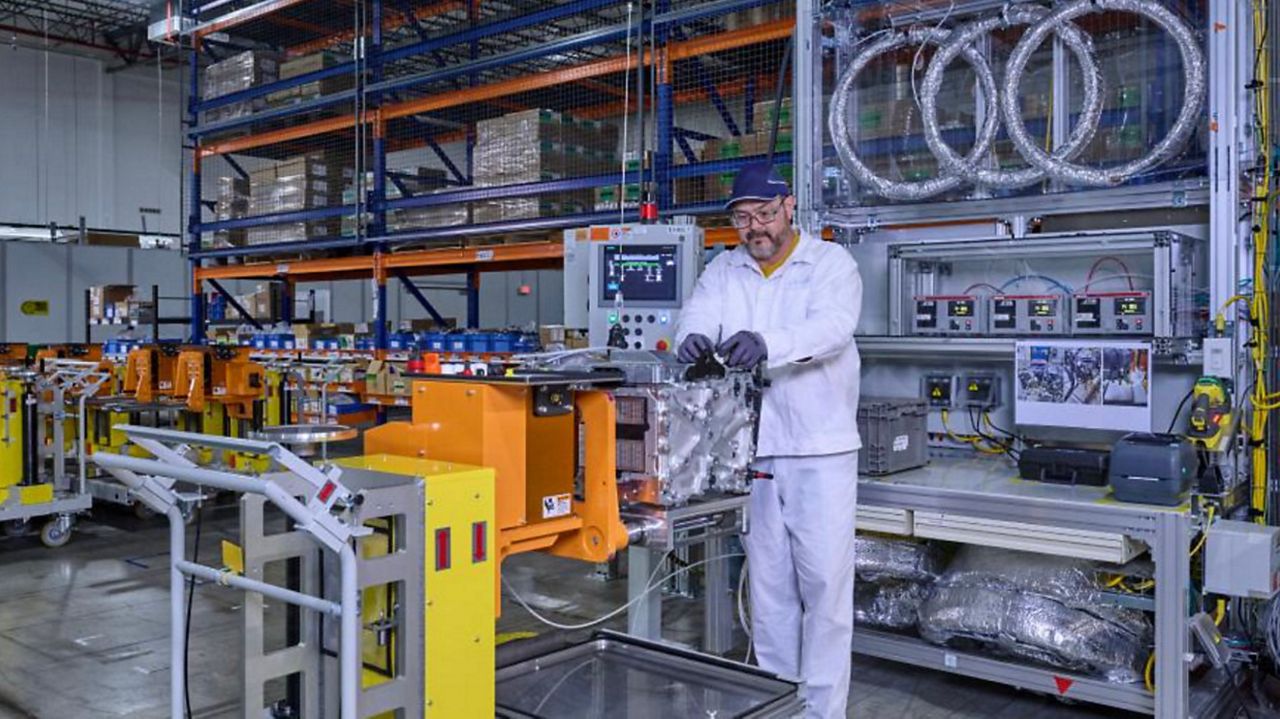The Department of Energy announced Wednesday that it will invest $750 million to fund clean hydrogen production in 24 states. The move is part of an ambitious plan to boost low- and no-emissions hydrogen as a major energy source for the United States as electricity demand increases.
Funded through the Bipartisan Infrastructure Law, the money will fund 52 projects to increase hydrogen fuel cell production and the electrolyzers needed to generate clean hydrogen. Electrolyzers separate hydrogen from water using renewable sources of electricity, such as wind and solar.
The projects are expected to produce electrolyzers that can generate 1.3 million tons of clean hydrogen annually — enough to power about 14,000 homes. They will also produce enough hydrogen fuel cells to power 15% of the medium- and heavy-duty trucks sold in the U.S. each year, according to the DOE.
Collectively, the projects “will supercharge our progress and ensure our leadership in clean hydrogen will be felt across the nation for generations to come,” Energy Secretary Jennifer M. Granholm said in a statement.
The DOE clean hydrogen funding announcement comes five months after the Biden administration announced a $7 billion investment in so-called hydrogen hubs in seven parts of the country. Each hub will include private and public entities that both produce and consume hydrogen in their geographic areas as part of the administration’s goal of achieving net-zero emissions by 2050.
When fully operational, the seven hubs are expected to reduce 25 million metric tons of carbon dioxide emissions each year — the equivalent of taking 5-1/2 million gas-powered vehicles off the road.
“Green hydrogen is one of the most promising technologies in the transition to a clean energy future and will support the industries that have long been central to our state, from mobility to manufacturing,” U.S. Rep. Debbie Dingell, D-Mich., said in a statement.
Michigan is receiving funding for two projects: A General Motors fuel cell manufacturing plant and a Nel Hydrogen electrolyzer manufacturing facility.
California, Texas, South Carolina and Ohio are among the states receiving funding for at least three projects as the Biden administration works to spur more sustainably produced hydrogen for use in manufacturing, transportation and electricity generation.
One of the most abundant elements on earth, hydrogen can be used to produce electricity, power manufacturing facilities, heat buildings and fuel vehicles with substantially lower greenhouse gas emissions than fossil fuels, but it depends how it is produced. The dominant method for making hydrogen currently uses natural gas and is less expensive than more sustainable methods, such as landfill gas or electrolysis.



